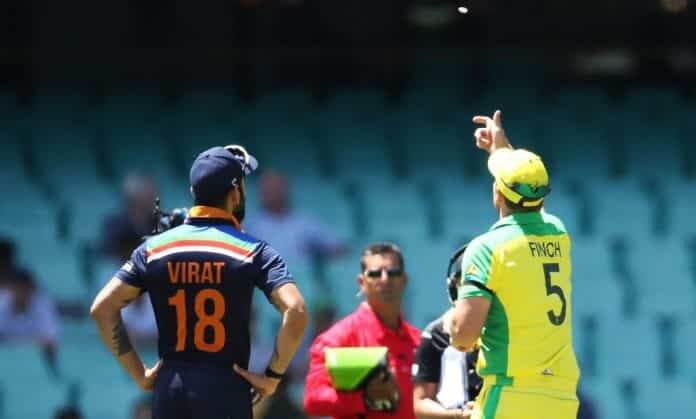The first post-COVID international cricket match with fans in attendance promised the Indian players a taste of those elements of the game to which they are most accustomed, but which they will have most missed this year: fans, fervour, dholi. For the first half of the Australia v India ODI at the Sydney Cricket Ground though, the Indian players – and their fans – were battered into quiet submission as the rampant Australian batsmen ran completely riot on a flat SCG pitch. So lacklustre was the Indian bowling performance that, combined with perhaps the worst fielding performance by any Indian side in the last decade, there was barely a cheer amongst the strong Indian contingent in the stands.
Incidentally, the match opened with silence too, as the half- full (but COVID-capacity) crowd in Sydney paused to remember two who were no longer among them – late Australian batsman Dean Jones, who passed away from a sudden and unexpected cardiac arrest in September, and Phil Hughes, who died 6 years ago to the day after the catastrophic injury he sustained from a bouncer during a Sheffield Shield match in 2014.
These poignant moments were one way to keep the typically raucous Indian crowd quiet; the other was a mammoth opening stand between David Warner and Aaron Finch, who
racked up their fourth partnership of over 150 against India, the most ever by any pair against a single country (taking them clear of Rohit Sharma and Virat Kohli against Sri
Lanka, and Rohit Sharma and Shikhar Dhawan against Australia).
The Indian bowlers, bar Mohammad Shami, were simply abysmal. But they deserve some sympathy; it is hard to bowl to a plan when your fielders cannot hold catches or stop
boundaries. As the number of dropped catches and misfields ran up – including by the usually reliable Kohli and Jadeja – so did the Australians’ score, until all of a sudden, Aaron
Finch had scored his 17th century, Steve Smith had rocketed to a sublime 105 off 66, and Glenn Maxwell had applied the finishing touches with a typically explosive and head-
scratching 45 off just 19 balls.
At half time, Australia’s total read 374 for 6, its highest-ever against India by some distance and the third-highest by any team. Third on a record list, too, was Steve Smith’s blistering century, the third-fastest by any Australian in ODI cricket.
The Indian innings in the first Australia v India ODI opened as though it were picking up where the Australian innings left off, with 20 runs coming off Mitchell Starc’s wayward opening over. The fall of Agarwal
in the sixth over did nothing to halt India’s momentum, with Kohli riding his luck to a run-a-ball 21, until Josh Hazlewood delivered two apparent killer blows in the space of three balls, claiming both Kohli and Shreyas Iyer and leaving India teetering at 80 for 3.
When in-form KL Rahul fell with India’s score at 100, the writing was all but on the wall for the tourists, though a 128-run partnership between Shikhar Dhawan and Hardik Pandya
flattered to deceive, Dhawan anchoring the Indian chase with 74 and the explosive Pandya notching up four sixes on his way to 90 off just 76.
When both were dismissed in quick succession, the Indians were staring down the barrel of a massive defeat, with only a long tail to come. The final margin of 66 runs was generous to the Indians, given this match was over before the second innings had even begun. It will feel like a long tour for India if the limited overs matches are this one-sided, and India can ill afford the negative energy ahead of the blockbuster Test series which begins in just 3 weeks’ time.





